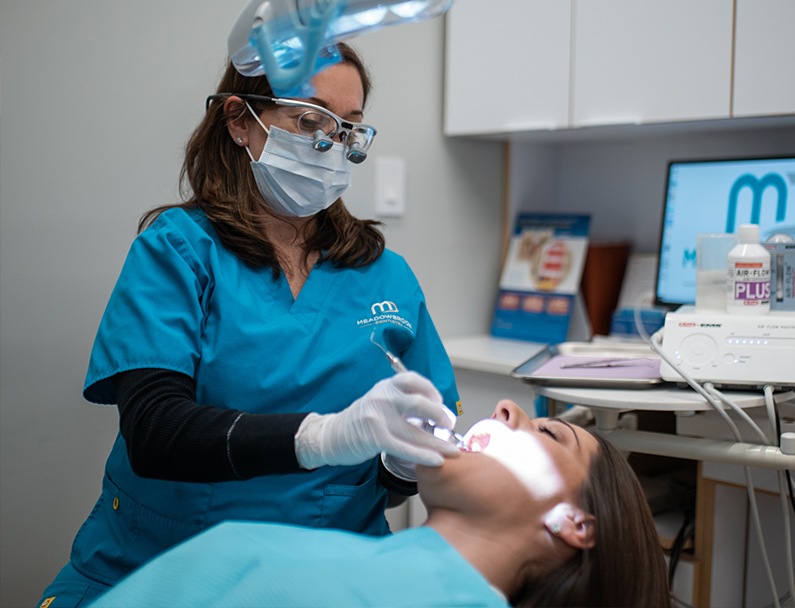Meet Your Pleasant Neighborhood Dentist Eugene OR and Their Solutions
Meet Your Pleasant Neighborhood Dentist Eugene OR and Their Solutions
Blog Article
Explore the Array of Dental Issues Dentists Typically Take Care Of
From the widespread trouble of cavities caused by bacterial activity to the much more perilous progression of periodontal illness, dental experts need to be experienced at very early discovery and treatment. Tooth level of sensitivity, usually resulting from used enamel, includes another layer of complexity, while the early recognition of dental cancer cells can be life-saving.
Dental Caries and Tooth Degeneration
Tooth cavities, also recognized as dental decays, are triggered by the demineralization of tooth enamel due to acid-producing bacteria in the mouth. If left unattended, tooth cavities can lead to significant oral problems, including infections and tooth loss.
To identify dental caries and tooth decay, dental experts employ a combination of aesthetic examinations, dental X-rays, and occasionally laser fluorescence devices. For more sophisticated degeneration, a dental professional might require to remove the jeopardized cells and recover the tooth with fillings made from materials such as composite material, amalgam, or porcelain.
Preventative measures are critical in combating dental caries and tooth decay. Regular dental examinations, appropriate cleaning and flossing strategies, and a balanced diet low in sugary foods and beverages are basic techniques that sustain dental wellness and minimize the risk of dental cavities.
Periodontal Illness

This creates the periodontals to draw away from the teeth, creating pockets that end up being infected. As the body's immune system fights the germs, the bone and connective tissue that hold teeth in place are broken down.
Dentists identify gum illness with clinical evaluation and gum penetrating to gauge pocket depths around the teeth. Treatment may involve scaling and origin planing to eliminate tartar and bacteria from tooth surface areas and beneath the gums.

Tooth Level Of Sensitivity
Beyond gum illness, another usual dental problem that patients often experience is tooth sensitivity. Characterized by a sharp, short-term discomfort in feedback to stimulations such as warm, cool, wonderful, or acidic foods and drinks, tooth sensitivity can considerably impact an individual's lifestyle - eugene dentist. This condition generally develops when the protective enamel layer of the teeth ends up being put on down or when the periodontals decline, subjecting the underlying dentin. Dentin includes tiny tubules that attach to the nerve endings within the tooth, thus transmitting the excruciating experiences.
A number of elements add to the development of tooth sensitivity. Aggressive cleaning, the usage of unpleasant tooth paste, and the usage of acidic foods and drinks can erode enamel. Additionally, dental treatments, broken teeth, and gum disease can reveal the dentin. To minimize tooth level of sensitivity, dental professionals may recommend making use of tooth paste developed for sensitive teeth, fluoride therapies to reinforce enamel, or dental bonding to cover exposed dentin. In severe instances, even more advanced therapies such as gum tissue grafts or root canals may be necessary.
Inevitably, resolving tooth sensitivity requires a detailed method that consists of both precautionary steps and targeted therapies to relieve pain and safeguard the oral structures.
Dental Cancer
Dental cancer, a possibly life-threatening and significant condition, often flies under the radar in regular dental treatment conversations. This kind of cancer cells can affect any part of the dental cavity, consisting of the lips, tongue, cheeks, flooring of the mouth, soft and tough palates, sinuses, and throat. Early discovery is important for effective treatment, yet lots of instances are diagnosed at sophisticated phases due to subtle first signs.
Misaligned Bites
Misaligned bites, likewise referred to as malocclusions, are a common oral concern that can considerably influence both oral health and wellness and total lifestyle - dentist eugene or. These problems occur when the upper and lower teeth do not straighten correctly, bring about difficulties in biting, chewing, and even talking. Malocclusions can be identified right into various types, including overbites, underbites, crossbites, and open bites, each providing one-of-a-kind challenges that require tailored treatment techniques
The root causes of misaligned attacks are varied and can consist of genetic elements, early loss of main teeth, thumb sucking, and injuries to the jaw. Signs and symptoms usually consist of pain or pain in the jaw, frequent biting of the inner cheeks, and a raised risk of dental caries and periodontal illness because of trouble in keeping dental health.
Orthodontists and dental experts utilize a series of treatments to address misaligned attacks, from clear aligners and conventional dental braces to more advanced medical procedures in extreme instances. Early medical diagnosis and treatment are essential to avoid difficulties such as temporomandibular joint (TMJ) problems and abnormal endure teeth. Through detailed analysis and individualized treatment plans, oral professionals play an essential duty in fixing malocclusions and enhancing patients' oral feature and aesthetic appeals.
Final Thought
Dental professionals deal with a spectrum of oral issues, each with unique challenges and therapy procedures. Tooth cavities and tooth degeneration result from over here microbial task that compromises tooth enamel, while gum tissue condition can escalate from gingivitis to extreme periodontal conditions. Tooth sensitivity entails discomfort from thermal stimulations, necessitating specific care. Early discovery of dental cancer is important for reliable treatment. Misaligned bites impact both dental wellness and top quality of life, typically needing orthodontic or medical solutions to correct.
To identify cavities and tooth decay, dental experts employ a mix of aesthetic examinations, oral X-rays, and often laser fluorescence tools.Beyond gum tissue disease, another common oral issue that people frequently come across is tooth level of sensitivity. In addition, dental treatments, cracked teeth, and gum tissue illness can subject the dentin. To alleviate tooth sensitivity, dental experts may suggest utilizing click to investigate tooth paste created for delicate teeth, fluoride treatments to reinforce enamel, or oral bonding to cover revealed dentin. Tooth cavities and tooth degeneration result from bacterial task that jeopardizes tooth enamel, while periodontal condition can rise from gingivitis to serious periodontal conditions.
Report this page